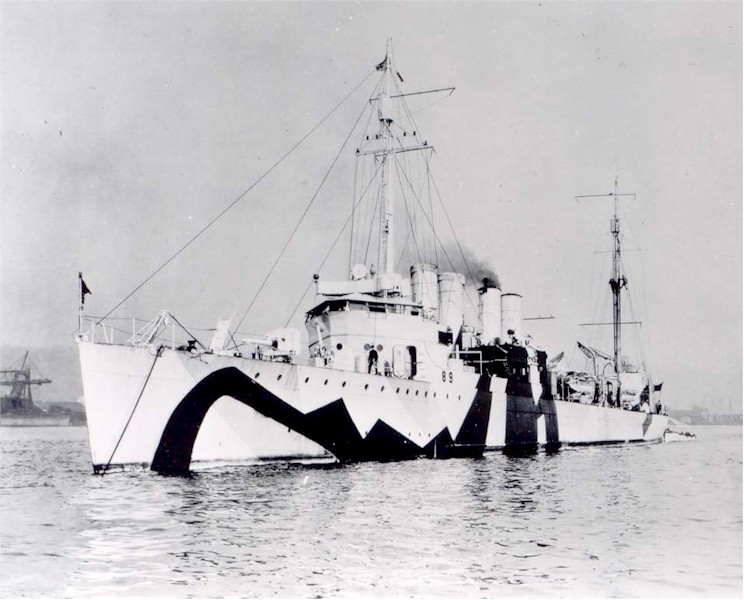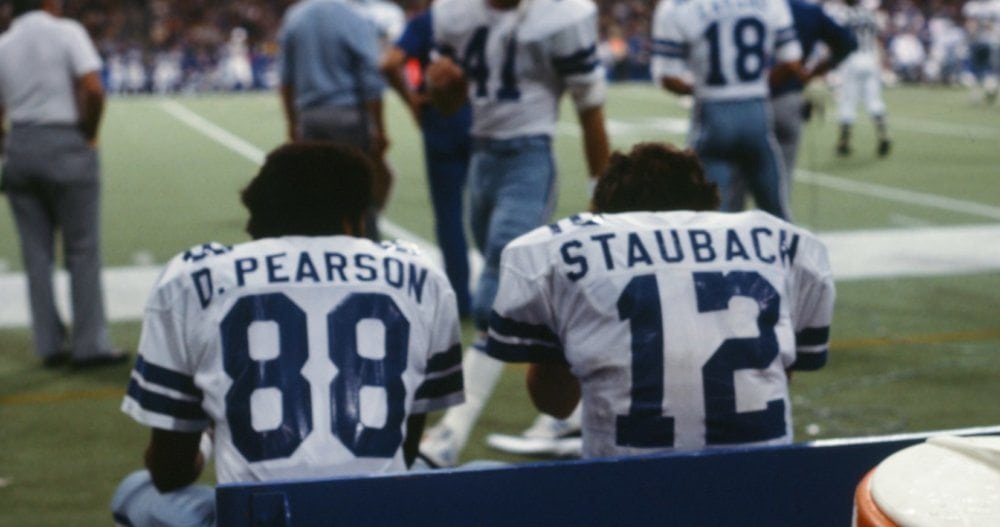Gamecock Fanatics
You are using an out of date browser. It may not display this or other websites correctly.
You should upgrade or use an alternative browser.
You should upgrade or use an alternative browser.
Countdown to Kickoff
- Thread starter Swayin
- Start date
Homebrewcock
GCF Top Poster
Not the Gamecocks, but still pretty classic.
USS Ringgold, DD-89.


https://en.wikipedia.org/wiki/USS_Ringgold_(DD-89)After remaining inactive for almost two decades, Ringgold recommissioned 23 August 1940 preparatory to transfer to Britain along with 49 other old flush-deckers as part of the Destroyers for Bases Agreement. Ringgold was formally transferred to Britain 26 November 1940 at Halifax, Nova Scotia, and renamed HMS Newark in honor of towns in both Britain and the United States. She was struck from the U.S. Navy list 8 January 1941.
USS Takanis Bay, CVE-89.
_underway_in_May_1944.jpeg)
_underway_in_May_1944.jpeg)
https://en.wikipedia.org/wiki/USS_Takanis_BayService history
After a brief shakedown, Takanis Bay reported to Naval Air Station North Island, San Diego, where she operated in support of carrier training operations. On 22 May, the first landing was made on the carrier's flight deck. Until the end of hostilities with Japan on 15 August 1945, a steady stream of carrier squadrons was trained onboard Takanis Bay, rotating off for service on a frontline carrier once they had finished qualifications. In this period, between 24 May 1944 to 28 August 1945, she qualified a record 2,509 pilots. She also engaged in the most landings of any Casablanca-class carrier: 20,159 landings. This record, at the time, was only surpassed by the venerable frontline fleet carriers Ranger and Saratoga. On 24 July 1945, pilots of VC-20 made 446 landings on a single day. Remarkably, only a single pilot died throughout her career as a training carrier, albeit accidents were frequent.
On 28 August 1945, she left San Diego, bound for Pearl Harbor, where she was assigned to Carrier Transport Squadron, Pacific Fleet. She joined the fleet of carriers repatriating American servicemen from around the Pacific theater. Between 28 August and 3 January 1946, she ferried about 6,500 troops. Firstly, in two trips, she returned 1,300 servicemen from Hawaii to San Diego. Late in September, the carrier was officially assigned to the Operation Magic Carpet fleet. While docked in San Diego, bunks for 800 passengers were installed in the hangar deck. Once modifications were complete, she made two more round trip voyages to Hawaii, along with a trip to the Tokyo Bay area.
Last edited by a moderator:
USS Mustin, DDG-89.
_in_the_Republic_of_Korea_Navy_Fleet_Review_2015.jpg/1920px-USS_Mustin_(DDG-89)_in_the_Republic_of_Korea_Navy_Fleet_Review_2015.jpg)
_in_the_Republic_of_Korea_Navy_Fleet_Review_2015.jpg/1920px-USS_Mustin_(DDG-89)_in_the_Republic_of_Korea_Navy_Fleet_Review_2015.jpg)
https://en.wikipedia.org/wiki/USS_Mustin_(DDG-89)USS Mustin (DDG-89) is an Arleigh Burke-class guided missile destroyer in the United States Navy. She is named in honor of the Mustin family who has devoted over a century of U.S. Naval service.
Namesakes
Often referred to as "The Father of Naval Aviation", Captain Henry C. Mustin (1874–1923), an 1896 graduate of the U.S. Naval Academy, was the principal architect for the concept of the catapult launch. He married Corinne DeForest Montague, great-granddaughter of Commodore Arthur Sinclair, and a first cousin and close confidante of Wallis Simpson who became involved in a controversial relationship with King Edward VIII of Great Britain who abdicated to marry her in 1936. The Mustins had three children: Lloyd M., Henry A. and Gordon S.
As a Lieutenant Commander in January 1914, Mustin established Naval Aeronautic Station Pensacola, the Navy's first permanent air station together with a flight school, and became its first Commanding Officer. The first flight was made from the station on 2 February by LT J. H. Towers and ENS G. de Chevalier. On 5 November 1915, while underway, LCDR Mustin successfully flew an AB-2 flying boat off the stern of the USS North Carolina (ACR-12) in Pensacola Bay, FL, making the first ever recorded catapult launching from a ship underway. In 1899, he earned a commendation for distinguished service in the capture of Vigan, Philippines. The first operational missions of naval aircraft were flown under his command during the Veracruz operation in 1914 and he was the first to hold the title: Commander, Aircraft Squadrons, Pacific Fleet. Designated Naval Aviator Number Eleven, Captain Mustin was instrumental in the design of the Naval Aviator Insignia.
His eldest son, Vice Admiral Lloyd M. Mustin (1911–1999), a 1932 graduate of the U.S. Naval Academy, took part in developing the Navy's first lead-computing anti-aircraft gun sight, which proved of major importance in the air-sea actions of World War II, and served on the cruiser USS Atlanta (CL-51) during the naval battle of Guadalcanal. His ship was lost during that action; with other survivors he landed on Guadalcanal and served ashore with a naval unit attached to the 1st Marine Division. His post-war service included commands at sea and development and evaluation of weapon systems. He later served as director of operations for the Joint Chiefs of Staff.
Vice Admiral Mustin's two sons, Vice Admiral Henry C. Mustin and Lieutenant Commander Thomas M. Mustin continued their family's tradition of military service. Vice Admiral Henry Mustin, a 1955 graduate of the U.S. Naval Academy, was a decorated Vietnam veteran who served in the 1980s as the Naval Inspector General, Commander, Second Fleet and Deputy Chief of Naval Operations for Plans and Policy. Lieutenant Commander Mustin, also a Naval Academy graduate (1962) earned a Bronze Star during the Vietnam War for river patrol combat action.
The 89th Fighter Squadron (Burma Banshees). Part of the 80th Fighter Group, which served in India and China during WWII.

https://www.burmabanshees.com/89th-fighter-squadron

https://www.burmabanshees.com/89th-fighter-squadron
Homebrewcock
GCF Top Poster
Insignia for the 89th Reconnaissance Squadron (presently 89th Attack Squadron).

.jpg/1280px-Army_B-25_(Doolittle_Raid).jpg)

https://en.wikipedia.org/wiki/89th_Attack_Squadron

The 89th Attack Squadron is a United States Air Force unit assigned to the 432d Wing as a tenant unit at Ellsworth Air Force Base, South Dakota. It has been active as a remotely piloted aircraft (drone) squadron there since 2011.
The squadron was first activated as the 89th Aero Squadron at Kelly Field, Texas during World War I. It deployed to France in 1917, where it constructed fields and trained observers, In 1918 it briefly trained as an observation unit, but the unit did not move to the front before the Armistice.
It was consolidated in the mid 1930s with the 89th Observation Squadron as the 89th Reconnaissance Squadron but remained inactive until 1940, when it was attached to the 17th Bombardment Group at March Field, California and equipped with medium bombers. In 1942 members of the squadron participated in the Doolittle Raid against Tokyo. The squadron, now named the 432d Bombardment Squadron, moved to the Mediterranean Theater of Operations and participated in combat until 1945, earning two Distinguished Unit Citations and the French Croix de Guerre with Palm before returning to the United States in late 1945 and being inactivated.
The 432d was reactivated as the 432d Attack Squadron in October 2011 at Ellsworth Air Force Base, South Dakota as a MQ-9 Reaper remotely piloted aircraft squadron.
World War II
The second predecessor of the 89th was constituted as the 89th Observation Squadron on the inactive list in 1935. In October 1936, the two squadrons were consolidated as the 89th Reconnaissance Squadron, but remained inactive until 1940.[2] The squadron was activated and assigned to General Headquarters Air Force at March Field, California, but attached to the 17th Bombardment Group. The squadron was reassigned to Northwest Air District in June 1940, with its primary mission being reconnaissance with a secondary mission of bombardment. It was initially equipped with Douglas B-18 Bolos, but soon converted to Douglas B-23 Dragons.
In 1941, the squadron replaced its B-23s with North American B-25 Mitchells. After the Japanese attack on Pearl Harbor, the 89th flew antisubmarine patrols off the Oregon and Washington coastline.
The 89th moved to Lexington County Airport, South Carolina in early 1942 to perform antisubmarine patrols over southeast Atlantic coast and the Gulf of Mexico. There it became the fourth bombardment squadron of the 17th group as the 432d Bombardment Squadron. Meanwhile, aircrews from the squadron trained with its B-25s at Hurlburt Field, Florida for the Doolittle Raid. Some aircrews from the squadron participated in the raid, while the balance of the squadron transitioned into Martin B-26 Marauders, and completed training in Louisiana before being deployed to the Mediterranean Theater of Operations shortly following Operation Torch, the North Africa invasion.
During December 1942 the squadron became part of XII Bomber Command. It engaged in combat operations over North Africa supporting American and later Allied ground forces in Tunisia. The unit flew interdiction and close air support, bombing bridges, rail lines, marshalling yards, harbors, shipping, gun emplacements, troop concentrations and other enemy targets, helping defeat Axis forces in North Africa.
During 1943, the 432d participated in the reduction of Pantelleria. It supported Operation Husky, the Allied invasion of Sicily and Operation Avalanche, the invasion of Italy. During the drive toward Rome, the squadron was awarded a Distinguished Unit Citation for its attacks on airfields near Rome on 13 January 1944. It was also awarded the French Croix de Guerre with Palm for its operations in Italy between April and June.
The unit provided tactical air support in the liberation of Sardinia and Corsica. From airfields in Corsica, the 432d supported Allied ground forces during Operation Dragoon, the invasion of southern France in August 1944. It moved to Southern France and bombed enemy targets during the Allied drive northward. It earned a second Distinguished Unit Citation for bombing attacks on enemy defenses near Schweinfurt, Germany just before the end of the war on 10 April 1945.
.jpg/1280px-Army_B-25_(Doolittle_Raid).jpg)

https://en.wikipedia.org/wiki/89th_Attack_Squadron
Last edited by a moderator:
Homebrewcock
GCF Top Poster
Homebrewcock
GCF Top Poster
Maynard Caldwell


Drew Pearson.


Last edited by a moderator:
Lynn Swann.










